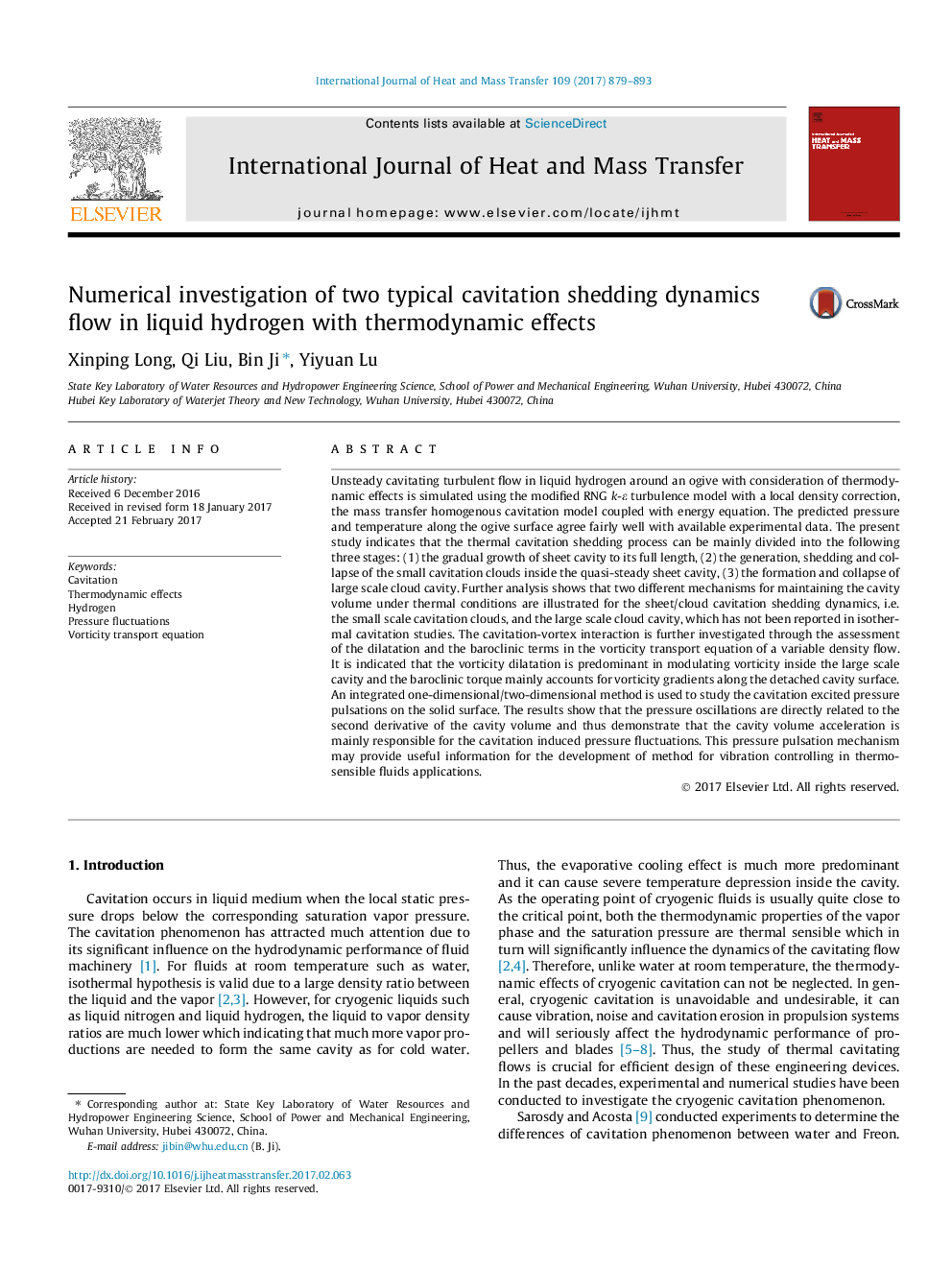| Article ID | Journal | Published Year | Pages | File Type |
|---|---|---|---|---|
| 4994536 | International Journal of Heat and Mass Transfer | 2017 | 15 Pages |
Abstract
Unsteady cavitating turbulent flow in liquid hydrogen around an ogive with consideration of thermodynamic effects is simulated using the modified RNG k-ε turbulence model with a local density correction, the mass transfer homogenous cavitation model coupled with energy equation. The predicted pressure and temperature along the ogive surface agree fairly well with available experimental data. The present study indicates that the thermal cavitation shedding process can be mainly divided into the following three stages: (1) the gradual growth of sheet cavity to its full length, (2) the generation, shedding and collapse of the small cavitation clouds inside the quasi-steady sheet cavity, (3) the formation and collapse of large scale cloud cavity. Further analysis shows that two different mechanisms for maintaining the cavity volume under thermal conditions are illustrated for the sheet/cloud cavitation shedding dynamics, i.e. the small scale cavitation clouds, and the large scale cloud cavity, which has not been reported in isothermal cavitation studies. The cavitation-vortex interaction is further investigated through the assessment of the dilatation and the baroclinic terms in the vorticity transport equation of a variable density flow. It is indicated that the vorticity dilatation is predominant in modulating vorticity inside the large scale cavity and the baroclinic torque mainly accounts for vorticity gradients along the detached cavity surface. An integrated one-dimensional/two-dimensional method is used to study the cavitation excited pressure pulsations on the solid surface. The results show that the pressure oscillations are directly related to the second derivative of the cavity volume and thus demonstrate that the cavity volume acceleration is mainly responsible for the cavitation induced pressure fluctuations. This pressure pulsation mechanism may provide useful information for the development of method for vibration controlling in thermo-sensible fluids applications.
Related Topics
Physical Sciences and Engineering
Chemical Engineering
Fluid Flow and Transfer Processes
Authors
Xinping Long, Qi Liu, Bin Ji, Yiyuan Lu,
